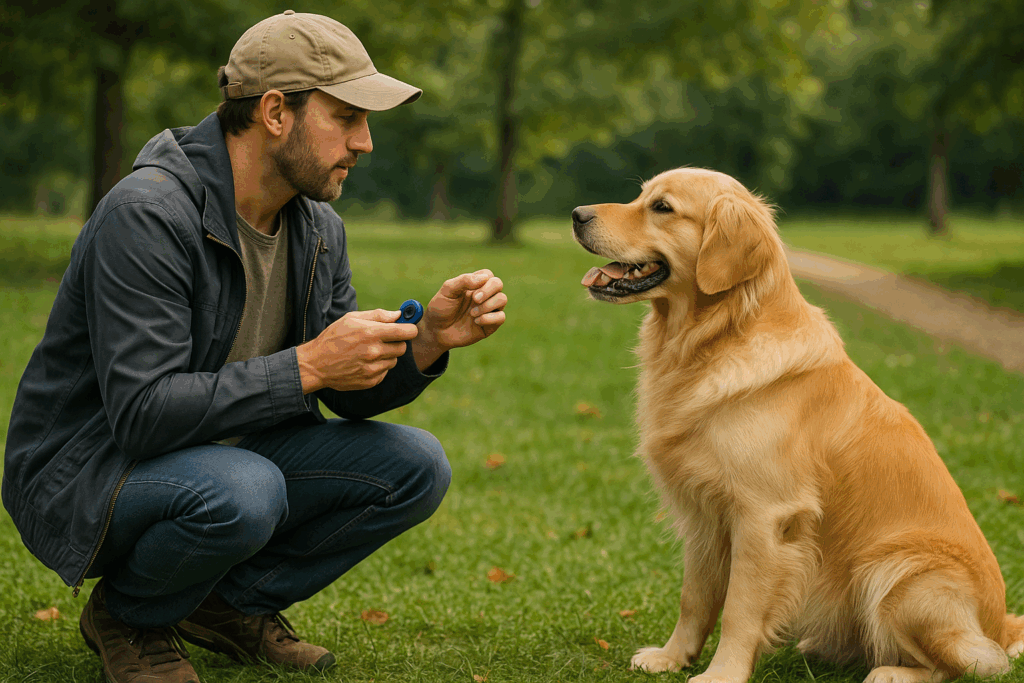🔹
An Obedient Dog
If there’s one thing I’ve learned as a lifelong dog lover, it’s this: an obedient dog isn’t just easier to live with — they’re happier too. Dogs thrive on structure, routine, and clear communication. And when they know what’s expected of them, life becomes more joyful for both of you.
I remember when I first started training my own dog. I quickly realized it wasn’t about strict rules or punishment — it was about building trust, having fun, and celebrating small wins together. Training became less of a chore and more of a bonding experience.

Why Obedience Training Matters
At its heart, obedience training is about safety, trust, and freedom. Imagine your dog walking calmly by your side without pulling, or sitting quietly while you chat with a neighbor. These aren’t dreams — they’re real outcomes of consistent training.
And let’s clear up a myth: obedience training isn’t just for “problem dogs.” Even the friendliest pup can benefit. Training helps stop unwanted behaviors like chewing furniture, jumping on guests, or running off when the gate opens. The bonus? It deepens your bond and makes everyday life smoother.
👉 Related: Advanced Positive Reinforcement Techniques for Pet Behavior Training
Setting Expectations (and Staying Patient)
No dog becomes perfectly obedient overnight. Trust me, I’ve been there — frustrated, wondering if my pup would ever listen. But every little step forward counts. Some dogs pick things up quickly, while others need more time. What matters is celebrating progress, no matter how small.
Patience and consistency are your best friends here. Training is a journey, not a race.
Different Dogs, Different Styles
Just like people, dogs have their own personalities. My dog was eager to please, but I’ve met others who are more independent (or stubborn!). Recognizing your dog’s temperament makes training smoother. Adjust your approach to fit their personality, and you’ll both enjoy the process more.
🔹 Fundamental Obedience Training Techniques
1. Positive Reinforcement
This is my go-to. Whether it’s a treat, praise, or belly rub, rewarding good behavior works wonders. Timing is everything — the reward has to come immediately so your dog makes the connection.
👉 Related: Positive Reinforcement for Puppies
2. Clicker Training
When I discovered the clicker, it was a game-changer. That crisp “click” marks the exact moment your dog does something right. Pair it with a treat, and your dog quickly learns that the click = reward.

👉 Related: Dog Training Clickers – How to Get Started
3. Consistency & Routine
Dogs thrive when things are predictable. Use the same words and cues every time. And if one method doesn’t click (pun intended), don’t be afraid to adapt.
4. Understanding Negative Reinforcement
This doesn’t mean punishment. It’s more about removing something unpleasant when your dog behaves. For example, loosening the leash pressure when they stop pulling. Done right, it reinforces calm behavior without fear.
🔹 Advanced Obedience Training Methods
Teaching Complex Commands
Once the basics are down, you can teach commands like heel or leave it. Breaking them into small steps makes it easier (and less frustrating).
Fixing Behavioral Challenges
Does your dog bark excessively? Struggle with anxiety? Tailored techniques like desensitization or impulse control training can make a huge difference.
Agility Training for Fun
Setting up a backyard obstacle course is one of my favorite activities. It’s great mental stimulation, strengthens obedience, and honestly — it’s just fun!
Group vs. One-on-One Training
Both have benefits. Group classes provide socialization, while private sessions offer personalized help. I’ve used both, and the combination can be powerful.
🔹 Tips for Success
- Pick the Right Environment: Start in a quiet, distraction-free place before moving to busier spots.
- Build Your Bond: Training works best when your dog feels connected to you. Play, walk, cuddle — it all matters.
- Celebrate Wins: Even if your dog only half-succeeds, praise them! Encouragement keeps them motivated.
- Ask for Help if Needed: I once hit a wall with training until I reached out to a certified trainer. Sometimes that extra support is exactly what you and your dog need.
👉 Related: Managing Aggression in Cats (great cross-link for readers with multi-pet homes)
Final Thoughts
Dog obedience training isn’t about being strict. It’s about communication, trust, and building a strong bond. It takes patience, yes, but the reward is a happier, well-adjusted dog who loves working with you.
Every “sit,” “stay,” and wag of the tail is proof that training is more than just commands — it’s a shared journey of growth and love.

